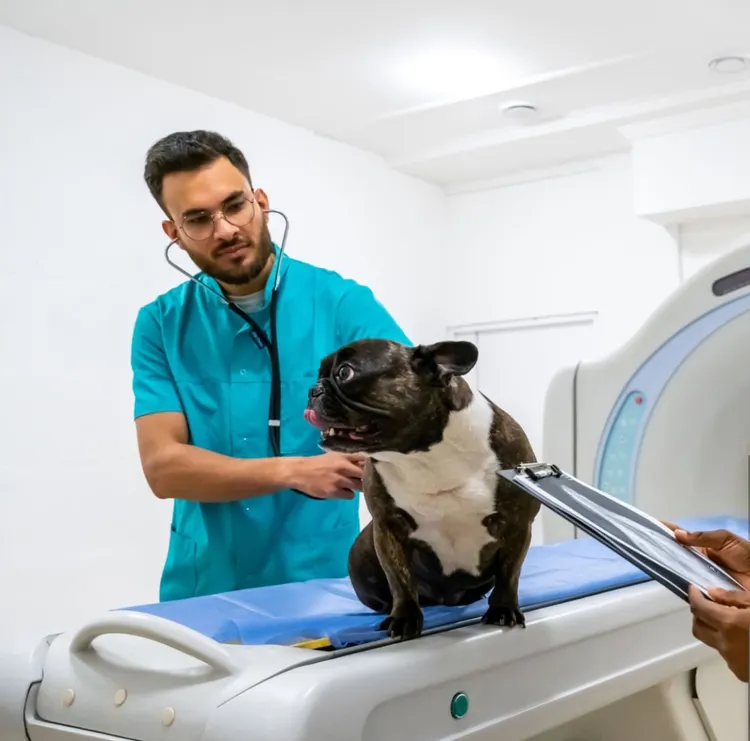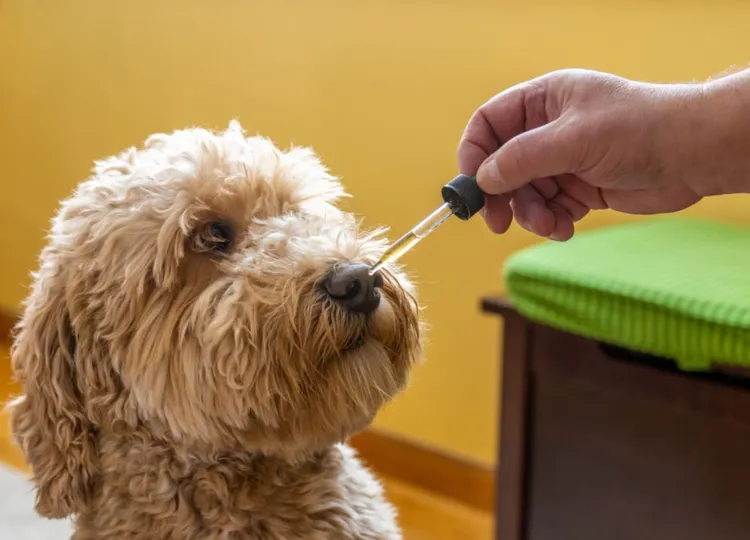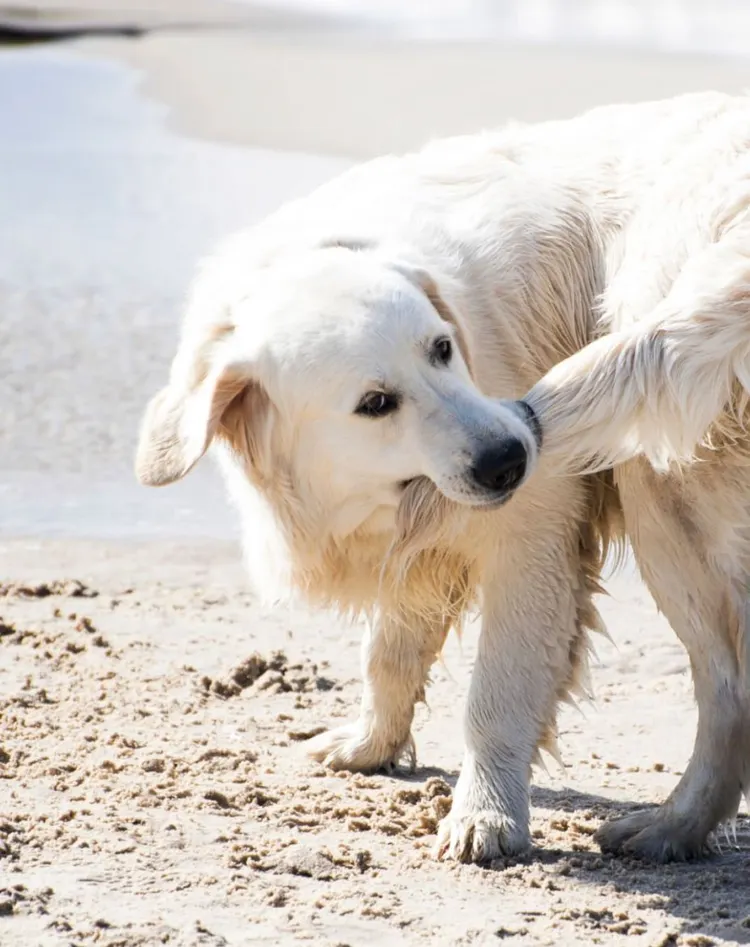Have you noticed your dog pacing in circles? While circling is a behavior that many pet owners may overlook, it can indicate anything from a quirky habit to a sign of underlying health issues. Understanding why your dog walks in circles is essential for ensuring their well-being. In this post, we’ll explore the potential reasons behind this behavior, discuss when to be concerned, and share eco-conscious ways to support dogs experiencing mobility challenges.
Common Reasons Dogs Walk in Circles
1. Age-Related Causes
Canine Cognitive Dysfunction (CCD)
In older dogs, walking in circles can sometimes be a sign of Canine Cognitive Dysfunction (CCD), which is similar to dementia in humans. CCD affects a dog’s cognitive functions, leading to symptoms such as disorientation, confusion, and repetitive behaviors like circling. Older dogs with CCD may walk aimlessly in circles and appear lost, even in familiar environments.
Key Symptoms of CCD:
- Disorientation and confusion
- Circling and pacing, especially at night
- Increased anxiety or irritability
- Disrupted sleep patterns
How to Help:
- Mental Stimulation: Interactive toys and puzzle feeders can help keep your senior dog’s brain engaged and reduce symptoms of CCD.
- Veterinary Consultation: Consult with your vet about medications or supplements like SAM-e or antioxidants that can support brain health in aging dogs.
- Routine: Keep a consistent daily routine, as dogs with cognitive decline benefit from predictability.
Arthritis or Joint Pain
Dogs with arthritis or other forms of joint pain may circle to find a comfortable position. Arthritis affects a dog’s mobility, and the repetitive motion of circling could be their way of minimizing discomfort before lying down. Older dogs or those with conditions such as hip dysplasia are more likely to exhibit this behavior.
How to Help:
- Natural Supplements: Consider adding eco-friendly supplements such as glucosamine, chondroitin, or fish oil to your dog’s diet. These supplements support joint health and can ease arthritis-related discomfort.
- Comfortable Bedding: Invest in orthopedic dog beds made from sustainable materials, such as natural latex or recycled memory foam, to provide better support for your dog’s joints.
2. Neurological Disorders
Vestibular Disease
One common cause of circling in dogs is vestibular disease, a condition that affects the inner ear and balance. Dogs with vestibular disease may feel dizzy, lose their sense of direction, and exhibit symptoms like head tilting, nausea, and walking in circles. This condition can be either idiopathic (no known cause) or the result of ear infections, head trauma, or other medical issues.
Key Symptoms of Vestibular Disease:
- Circling (usually in one direction)
- Head tilting
- Vomiting or nausea
- Loss of coordination
- Unsteady gait
How to Help:
- Veterinary Care: Vestibular disease often requires veterinary attention, especially if it develops suddenly. Your vet can prescribe medications to manage nausea and dizziness and investigate any underlying causes, such as an ear infection.
- Comforting Environment: Keep your dog in a quiet, safe environment where they can move around without risking injury. Consider using eco-friendly, non-slip rugs made from natural fibers to help prevent falls on slippery floors.
Brain Tumors or Head Trauma
Less commonly, walking in circles can be a symptom of a brain tumor or head trauma. In these cases, dogs may exhibit disorientation, confusion, and other neurological signs alongside circling. If your dog has experienced head trauma or shows additional symptoms such as seizures, loss of balance, or changes in behavior, it’s essential to seek veterinary care immediately.
How to Help:
- Veterinary Evaluation: If neurological conditions like a brain tumor are suspected, your vet will likely recommend diagnostic imaging (such as an MRI) to assess the extent of the issue. Early detection and treatment are crucial for the best outcomes.
3. Behavioral Causes
Anxiety or Compulsive Behavior
Dogs suffering from anxiety may walk in circles as a coping mechanism. Circling can become a compulsive behavior in dogs with conditions such as separation anxiety. If your dog circles excessively in stressful situations or when left alone, anxiety might be the underlying cause.
Key Symptoms of Anxiety:
- Repetitive circling or pacing
- Whining, barking, or destructive behavior
- Excessive licking or chewing
- Restlessness
How to Help:
- Natural Calming Products: Use eco-friendly products like lavender essential oil sprays or herbal calming chews to help reduce anxiety. Make sure any essential oils are pet-safe and used in moderation.
- Behavioral Training: Work with a positive reinforcement trainer to address the root of your dog’s anxiety and teach calming behaviors.
Pre-Sleep Rituals
Circling before lying down is a completely normal behavior for many dogs. This instinctual habit, passed down from their wild ancestors, allowed dogs to trample down grass or leaves to create a comfortable sleeping spot in the wild. If your dog circles only a few times before settling down to rest, this is likely a harmless, normal behavior.
When Should You Be Concerned?
While some circling behaviors are harmless, certain signs suggest that the behavior may be a symptom of a more serious issue. Here’s when to consider consulting a vet:

When to Consult a Vet:
- Frequent, Compulsive Circling: If your dog is circling constantly or compulsively, with no clear reason (such as preparing for sleep or play), this could indicate an underlying issue like anxiety or a medical condition.
- Accompanying Symptoms: If circling is paired with symptoms such as vomiting, head tilting, loss of balance, or confusion, seek immediate veterinary attention, as this could point to vestibular disease or neurological problems.
- Pain or Discomfort: If your dog seems to be in pain while circling or shows reluctance to move, it could be due to arthritis, joint pain, or other physical issues.
Immediate Steps and Long-Term Care
If you notice your dog circling more frequently or exhibiting other concerning behaviors, the first step is to schedule a vet check-up. Early detection of underlying conditions can help prevent further complications and ensure the best possible care for your dog.
1. Vet Check-Up
A thorough veterinary examination can rule out medical conditions such as vestibular disease, brain tumors, or joint issues. Your vet may also recommend diagnostic tests to evaluate your dog’s neurological health.
2. Natural Remedies for Joint Pain
If arthritis or joint pain is causing your dog to circle, natural remedies such as glucosamine and chondroitin supplements can support joint health. These eco-friendly supplements are often sourced from sustainable marine or plant-based ingredients. Adding omega-3 fatty acids through fish oil or flaxseed oil can also help reduce inflammation and improve mobility.
3. Mental Stimulation
For dogs with behavioral causes of circling, providing plenty of mental stimulation can help prevent boredom and anxiety. Interactive toys, food puzzles, and regular training sessions can engage your dog’s mind and reduce repetitive behaviors.
4. Eco-Friendly Mobility Aids
For dogs with mobility challenges, consider investing in eco-friendly ramps or non-toxic orthopedic beds. Look for products made from recycled materials or organic cotton to reduce your environmental footprint while keeping your dog comfortable.

Eco-Friendly Lifestyle Tips
Use Natural Calming Products
To help anxious dogs, consider using natural calming products. Lavender essential oil is known for its soothing properties, and you can create a simple spray using lavender and water to lightly mist your dog’s bed (just ensure it’s safe for pets). Herbal calming chews made from organic ingredients can also help reduce stress without relying on synthetic chemicals.
Choose Recyclable Materials
For dogs with mobility issues, invest in upcycled ramps, organic bedding, or biodegradable dog toys. By choosing eco-conscious products, you’ll not only care for your dog’s health but also reduce waste and environmental impact.
Conclusion
Circling behavior in dogs is not always a cause for concern, but it’s important to pay attention to when and why your dog exhibits this behavior. Whether it’s related to age, medical conditions, or anxiety, understanding the reasons behind circling can help you provide the best care for your dog. With proper attention, eco-friendly lifestyle adjustments, and early intervention, you can ensure your pet stays healthy, comfortable, and stress-free for years to come.



